This is part 1 of the Every Pitch in Baseball Series.
- Part 1: Types
- Part 2: Fastballs
- Part 3: Glove-Side Pitches
- Part 4: Arm-Side Pitches
- Part 5: Not-So-Common Pitches
There’s about a dozen-dozen pitches in baseball.
And they’re confusing. They’re confusing because everyone has their own names for the pitches.
That’s why you’re reading this post.
Often people confuse which pitches are which, like Corey Kluber’s Slider/Curve thing.
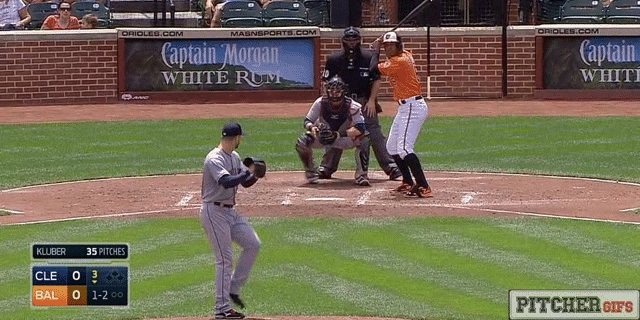
You are about to see the records straight.
This Series is going to start with general need-to-knows and get specific to each individual pitch. Soon, you will be able to tell the difference between a Vulcan-Changeup and a Circle-Changeup. By the end, you’ll know better than 99.9% of baseball fans out there.
Here begins the basic types.
Fastball and a Non-Fastball
Every pitch is either a fastball or not a fastball. Very simple.
The heater(fastball) is the first pitch mankind has ever discovered. It’s the fastest(reason it’s called a fastball), and is the foundation of pitching. Back in the 19th century, fastballs were generally 70–80 mph. Nowadays, Major League fastballs range from 90–100 mph, with a few pitchers being able to throw over 100 miles per hour:
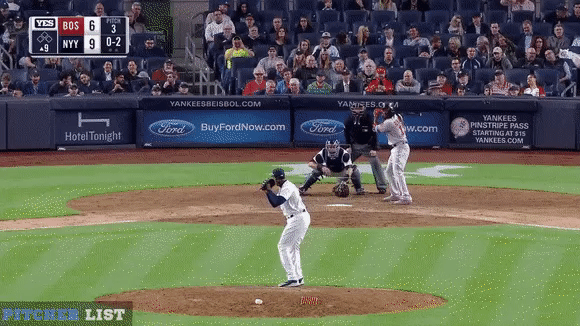
Non-fastballs are designed to be not fastballs. Pitchers figured out early on that throwing every pitch straight isn’t that effective for most guys. Non-fastballs break left/right/down, more than fastballs. They’re thrown in a wide range of velocity; some of them reach mid-to-upper 90’s, while some pass below 60mph:

Fourseam and Breaking Fastballs
There are basically 3 types of Fastballs:
Fourseam Fastball
This is the origin of all fastballs. It has the best rise to it; though no pitch actually rises, the back-spinning pitch has the most resistance against gravity:

Breaking fastballs are variations from the Fourseam.
Armside vs. Gloveside
Breaking fastballs usually differ from the Fourseam by either having an extra cut or run to them. Cut means breaking to the gloveside, or left for a right-hander. And run is the opposite(armside).
They also have an extra drop too. More is explained in Part 2.
Gloveside Breaking-Fastball:
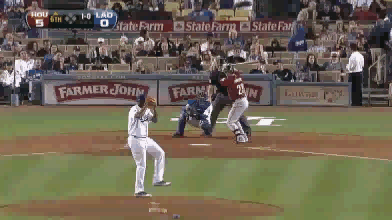
Armside Breaking-fastball:
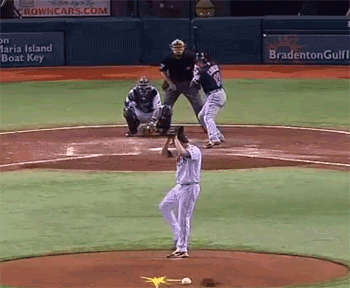
Generally, the Fourseam is the fastest. However, some pitchers can throw their Cutters/Twoseamers into the upper 90s and even above 100 mph.
Breaking Balls & Offspeeds
Non-fastballs fall into 2 categories Breaking balls and Offspeed pitches.
Breaking balls
Breaking balls break. They give hitters a hard time because when the ball moves up & down & left & right, it’s hard to hit.
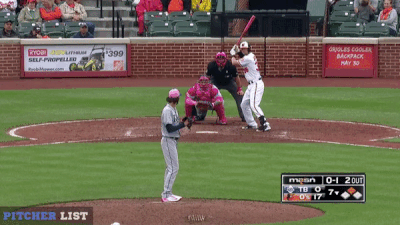
Most breaking balls are chase pitches: they look like a fastball, then break out of the strike zone, making the hitter “chase” the ball. Chase pitches account for the majority of strikeouts.
Offspeeds
Offspeeds (usually)break less. Their goal is to keep the hitters on their toes(out of their hitting rhythm).
How? Instead of having a big break, they change the speed; going slower.
When the hitters get fooled, they start the swing early(to hit the Fastball), then swing through before the ball reaches home plate.
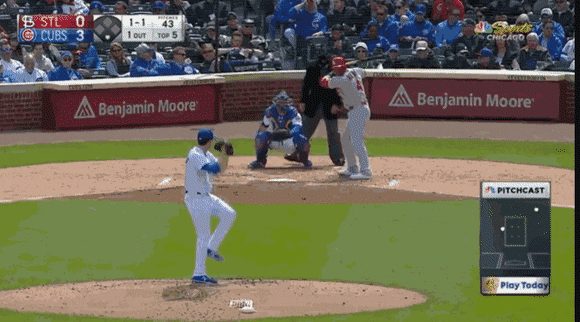
You can tell that the hitter’s swing was very early, and by the time the ball reaches the plate, the bat’s gone long ago.
Gloveside/Armside Non-Fastballs
Breaking balls and Offspeeds also break gloveside or armside.
An example of gloveside breaking ball:
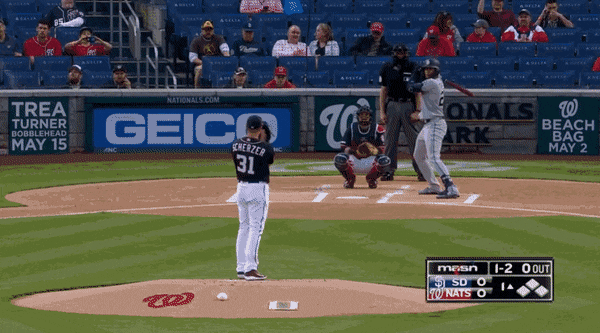
An example of armside offspeed:

Some pitches mostly break down, making it hard to name whether it’s armside or gloveside.
We don’t have to trust our eyes, though. Instead, we can look at the numbers. Pretty much all pitches consistently break either armside or gloveside, so they can still be classified as one or the other.
Curveball is a gloveside pitch.

Screwball is an armside pitch:
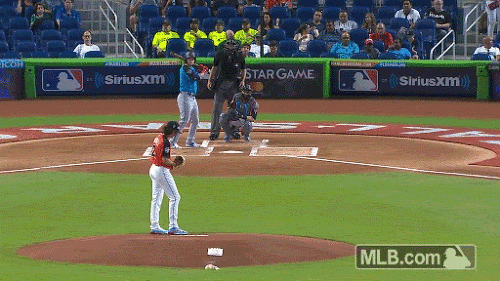
Other Pitches
Some pitches don’t fit into any of these continuums. Here are some examples:
Eephus is a junk pitch. It’s like a slow-slow offspeed. Even though it’s easier to hit when expected, it catches the hitter(who’s waiting for light-speed pitches) off-guard. Some are slower than little-league pitches, breaking more than any curveball.
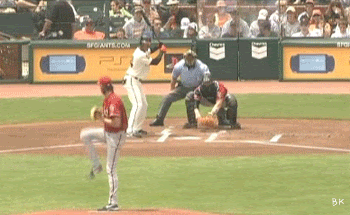
Knuckleballs don’t have any spin. (Spin on the baseball is what makes it move) Because of physics, its movement is unpredictable. How is too complicated for this article.
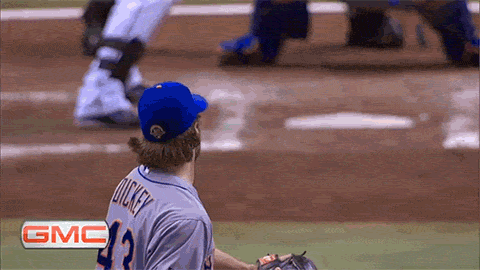
Summary
These are all the basic baseball pitches we’ve looked at:
- Fastballs: Fourseam, Twoseam, Cutter
- Arm-side & Gloveside Pitches
- Breaking Balls & Offspeeds
- Others
Next up: Fastballs
